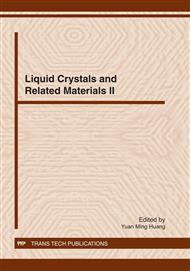p.55
p.59
p.63
p.67
p.71
p.75
p.79
p.83
p.88
Study of Blue-Phase III–Isotropic Phase Transition
Abstract:
In this paper, using the theories of Bogolyubov-Hellman-Feynman (BHF) and mean-spherical approximation, we get the system free energy within the four-order self-consistent cumulant expansion. According to the conditions of equilibrium state and self-consistent equation, we obtain the relation between reduced temperature and inverse correlation length and disscuss that the cubic invariant item is important in explaining BPIII to isotropic transition.
Info:
Periodical:
Pages:
71-74
Citation:
Online since:
November 2011
Authors:
Keywords:
Price:
Сopyright:
© 2012 Trans Tech Publications Ltd. All Rights Reserved
Share:
Citation:


